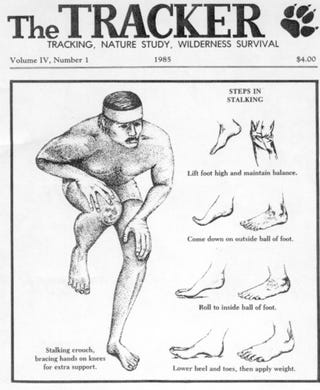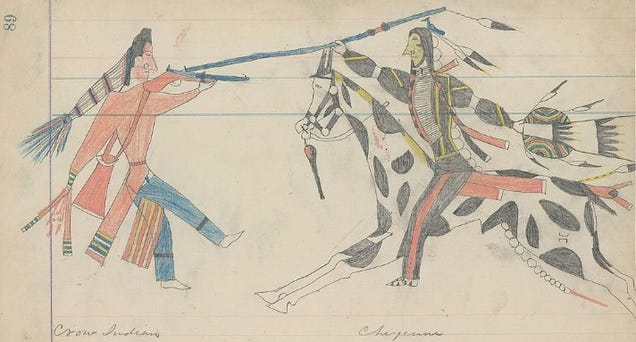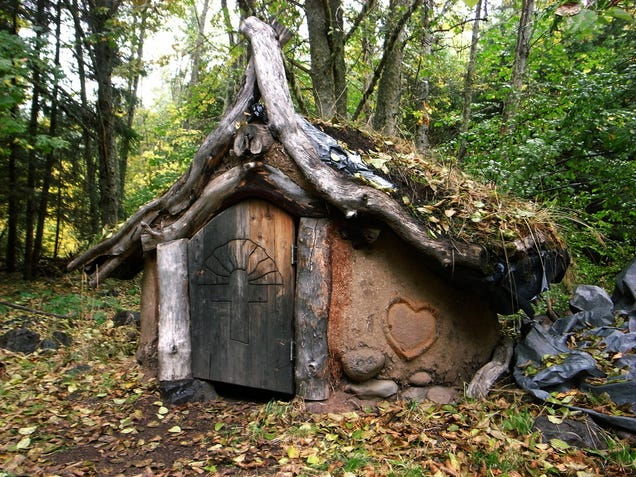
Want to see more animals, move quietly through the woods or just feel a stronger connection with the world around you? Here's five traditions passed down to us by our First Nations, all capable of doing just that, occasionally in surprisingly powerful ways.
A major reason we have such a great outdoors tradition in North America is the wisdom passed down to us by Native Americans. From the way we teach our kids about manhood — The Boy Scouts — to our reverence for wide open spaces, the lessons we learned from the first people to live on this continent are still palpable in our day-to-day lives. And, perhaps surprisingly, more relevant than ever.http://indefinitelywild.gizmodo.com/how-to-buy-you...

The Fox Walk: Moving quietly through the woods is one of the first skills any outdoorsman must learn. There's still an awful lot of life out there, you just won't see it — or appreciate it — until you slow down, adapt to the pace of the environment you're in, and stop disturbing it so much.
The ability to stalk was taught to me in Boy Scouts, but was handed down to white men by the people who taught them to hunt and survive in this continent's vast wilderness. You're not going to be able to read this, then immediately go sneak up on a deer and poke it in the butt, but we can at least outline the basic steps for you, ones you should devote time to practicing whenever you're outdoors.
This is basically a way to sense what's under your feet before putting weight on them, snapping twigs or rustling the leaves you're walking over. To do it, lift one foot high enough to clear any small branches, grass or other obstacle (sometimes as high as your knee), then extend it forward and slowly move it towards the ground. Point your toes up as your foot gets close to the ground and make contact first with the outside of the ball of your foot. Don't put weight on it yet. Roll your foot sideways to connect the rest of the ball with the ground, feeling for obstacles. If you detect a twig or something else that's going to make noise, put your foot somewhere else and try again. When you've found a good step, lower your heel to the ground, then your toes, then transfer your weight. Repeat. http://indefinitelywild.gizmodo.com/hunting-alaska...
That sounds slow and awkward, but with time can become fluid and natural and enable you to make decent progress. Which you'll be doing as quietly as possible. With patience, practice and awareness, this can allow you to approach animals stealthily enough that they won't notice you until you reach out and touch them. I've done that with creatures as wary as deer, you can too.

Counting Coup: This is a great way for a group to practice the skills of moving silently and concealment. And an even better demonstration of their power and application.
It comes from a Plains Indian tradition of touching enemies without harming them during battle, thus demonstrating great skill. The other guy was trying to kill you, and you'd just walk up and whack him on the back of his head, then walk away. You'd count a coup by putting a notch on your coup stick.
I first did this while spending a little time living off the land with a member of the Cherokee Nation in the Georgia mountains as a child. The small group of participating kids all fashioned foot-long coup sticks from tree limbs, decorating them with carvings, bird feathers or other natural totems. Then, we hunted each other with them. If you were tapped by another's coup stick, then you had to give that other kid your dinner that day.
That may sound a little like Lord Of The Flys, and it was, but rather than an all-out hunt, it just became part of our other daily activities and lessons. No, you couldn't just whack another kid with your stick while walking together in a group, but if you spotted an opportunity to sneak up on someone unawares, you took it. I suppose this teaches awareness too.

Photo: Brian Liloia
Sweat Lodge: You sit in a sweat lodge to undergo a purification ceremony. In a small enclosure created by bending over green branches and covering them with hides or mud, hot rocks are carried inside from a fire burning outside. Water is poured over the rocks, producing billowing clouds of steam. The idea is that you sit in that steam for periods of 15 minutes or more.
What does that do for your connection with nature? Well, famed wilderness tracker and author Tom Brown describes the effect as an "attunement," it's a way of shedding the thoughts and stresses and impurities of your civilized life and bringing your mind down to the pace of the natural world. It locates you and is a great way to begin any long period spent in the outdoors.
Sweat lodges are typically considered sacred and there's specific ways and orientations in which you're supposed to build them. Learn these from someone initiated in them before trying it yourself, you'll also want to pick up the safety stuff from them too.
No comments:
Post a Comment